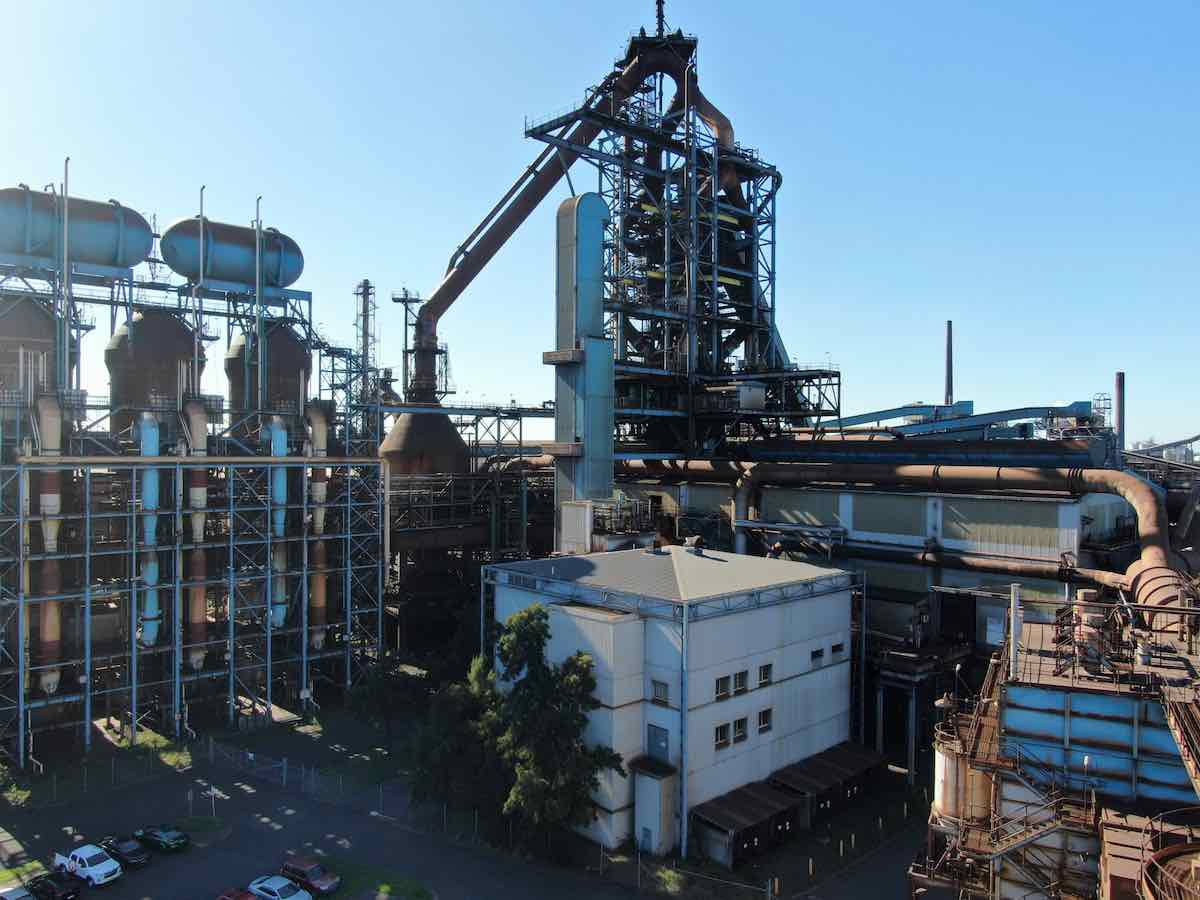

Image: BlueScope Steel
Articles and newspaper reports about decarbonisation of the steel industry almost inevitably include the phrase “hard-to-abate”.
It has become generally accepted – not without reason – that shifting the steel industry away from coal is more difficult than it is in the power sector where wind and solar power are now well established and increasingly low cost.
However, the second half of 2022 saw some significant momentum for hydrogen-based direct reduced iron (DRI) technology emerge, just as wind and solar power technology did a decade or so ago.
A growing number of steel manufacturers have committed to net zero emissions by 2050 or even earlier. However, steel companies’ decarbonisation efforts over the next decade are often little more than tinkering with existing coal-based technology, with the majority of decarbonisation efforts earmarked for the longer term, well after incumbent CEOs will have left.
These long-term decarbonisation plans often offer little detail and are based on unproven carbon capture technology. Such companies are at risk of appearing to be giving lip service to net zero emissions.
Late in 2022, the Chairman of Australian steelmaker BlueScope stated that a shift away from blast furnace operations at its Port Kembla site isn’t possible as “the technology is not ready yet”.
According to its most recent Sustainability Report, BlueScope doesn’t see alternative steelmaking technology gaining significant take-up across the global steel industry until the 2040s. As a result, it’s planning a A$1 billion reline of an existing blast furnace to bring it back into operation by 2026, with an operational life of up to 20 years.
Certainly, there are significant decarbonisation challenges for steelmakers – iron ore currently exported out of the Pilbara that makes up such a significant part of global supply generally isn’t suitable for DRI-based steelmaking that can use hydrogen.
But BlueScope’s plan to continue with blast furnace operations risks making it look like a technology and climate laggard given what has happened in Europe over recent months.
September 2022 saw Germany’s ThyssenKrupp announce a landmark €2 billion plan to begin replacing its blast furnaces with DRI-based plants that can use blast furnace-grade iron ore. The first new plant is planned to be operational in 2026. This followed board approval for Salzgitter’s shift from blast furnaces to low-carbon DRI processes in July 2022, with new production planned from 2025.
In October 2022, H2 Green Steel announced billions of euros in funding for its 2.5 million tonne DRI-based steel project. The greenfield integrated steel mill is planned to commence by 2025 and double its capacity by 2030.
Aided by a significant European carbon price and public funding, Europe is leading the world in demonstrating that alternative steelmaking technology based on hydrogen is ready now.
The “hard-to-abate” argument is also used by steelmakers to request public funding for their technology transition and, in Europe at least, they are getting it as governments seek to ensure they maintain sustainable primary steelmaking capacity.
Hydrogen-based steelmaking technology has also left carbon capture utilisation and storage (CCUS) even further behind since Tata Steel cancelled its carbon capture plan in the Netherlands in favour of DRI.
CCUS in the steel industry faces similar challenges to other sectors such as power generation and gas production where the technology has a long history of major underachievement.
Iron ore major BHP stated in a 2022 media release that “there are no full scale operational CCUS facilities in blast furnace steelmaking operations at present, with only a limited number of small capacity carbon capture or utilisation pilots underway or in the planning phases globally”. International steel major ArcelorMittal’s “flagship” CCUS project will capture only a tiny percentage of its Belgian operations emissions.
Any plan to continue to build blast furnaces, with CCUS to be retrofitted at some unspecific later date to reach net zero emissions targets, risks being seen as greenwash without any significant progress for the technology on the ground.
An increased use of hydrogen-based DRI globally faces challenges but these currently seem more surmountable than planned reliance on CCUS. Cheaper green hydrogen is one requirement as is improved focus on where green hydrogen can most effectively contribute to decarbonisation – likely industries such as steel and fertilisers, not household heating and power generation.
Increased supply of the higher-quality direct reduction-grade (DR-grade) iron ore required by most DRI processes will also be needed. Vale – the world’s largest supplier of DR-grade iron ore – intends to increase DR-grade ore production to meet the greater demand it now expects by 2030.
More technology solutions that enable the use of blast furnace-grade iron ore in DRI processes will also be needed. In addition to ThyssenKrupp’s technology plan, Metso Outotec’s new DRI Smelting Furnace technology is also able to use blast furnace-grade ore in a direct reduction-based process.
Primetals is working with iron ore major Fortescue and Mitsubishi Corporation on DRI-based technology that could use Pilbara blast furnace-grade iron ores.
The shift away from coal-based steelmaking has accelerated and will inevitably happen faster than expected, in common with other technology transitions.
With 71% of the world’s coal-based steelmaking capacity reaching the end of its operating life by 2030, companies delaying their transition until the 2030s and 2040s put themselves at significant risk of missing their net zero emissions targets.
Low-carbon steel technological progress and further decarbonising investment decisions can be expected in 2023. The phrase “hard-to-abate” may need to be retired sooner than people think.
Simon Nicholas, Energy Finance Analyst, IEEFA
Global online and AI giant Meta has signed a 25-year power purchase agreement (PPA) to…
I sometimes wonder how senior management at gas companies rationalise what they do to the…
The world's largest producer of gold will source renewable electricity from Western Australia's biggest wind…
Peter Dutton’s entire extra supply from his National Gas Plan will disappear up a smokestack…
A major green iron project has secured land to host its giant electrolyser, and is…
City of Sydney moves step closer to banning gas connections in new homes and businesses,…